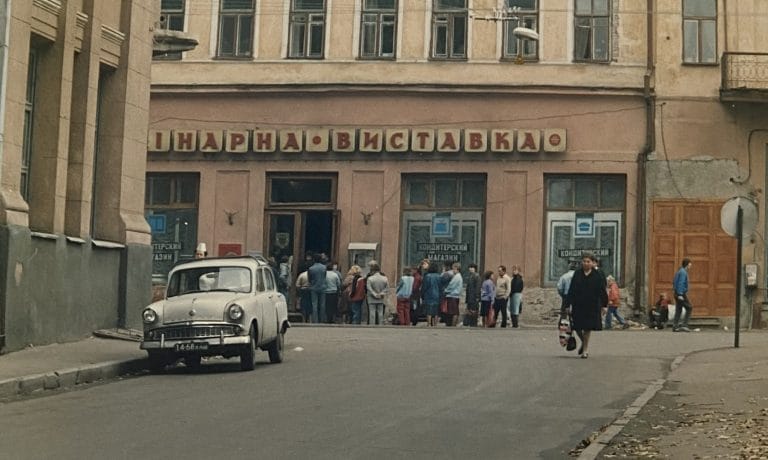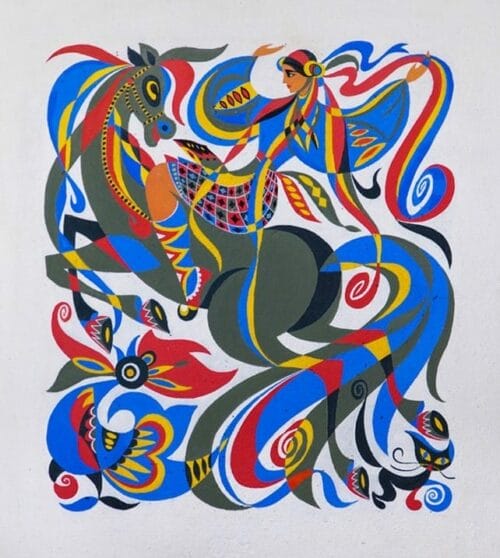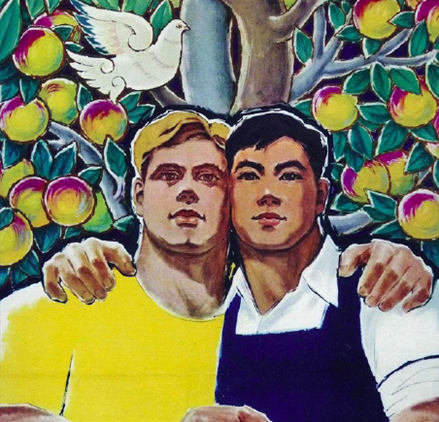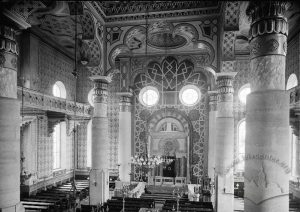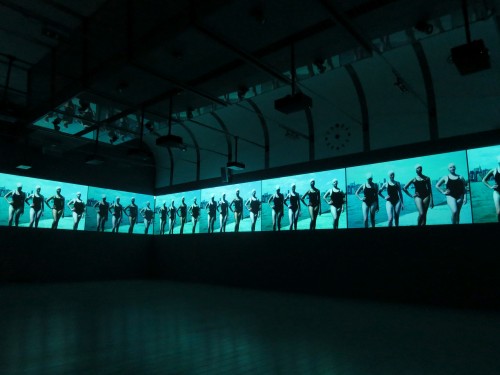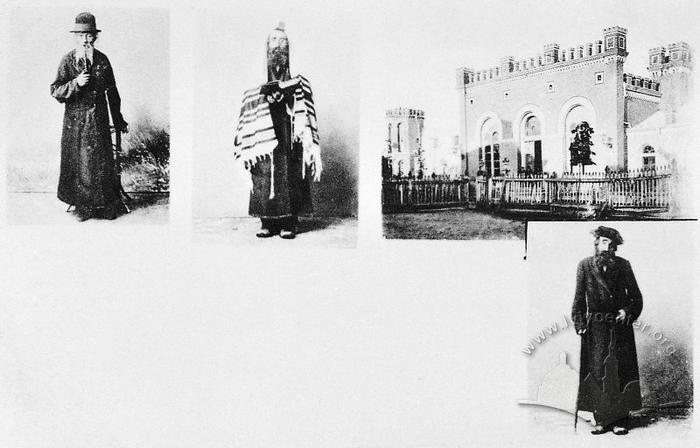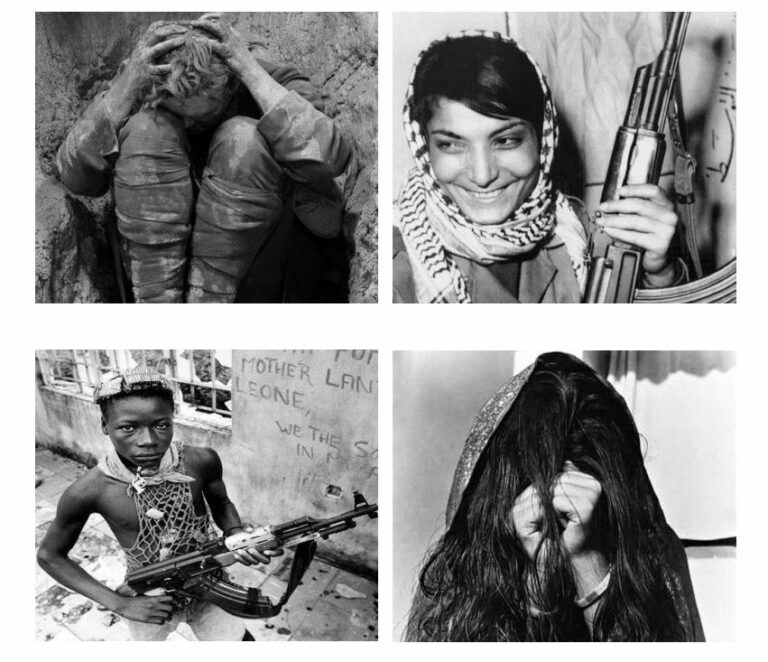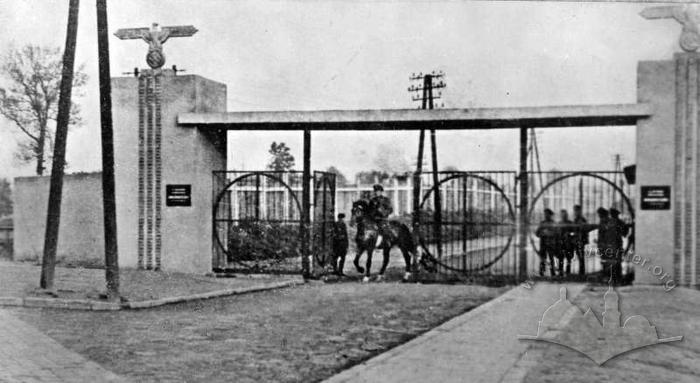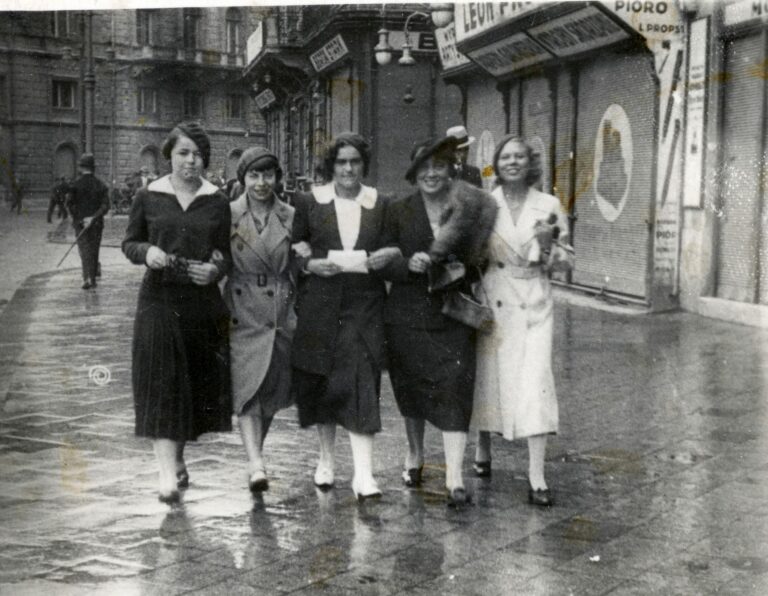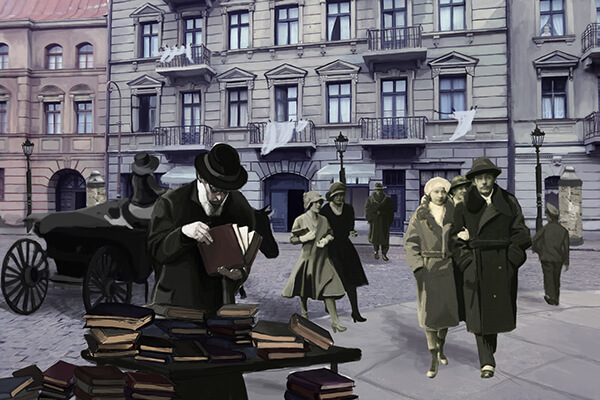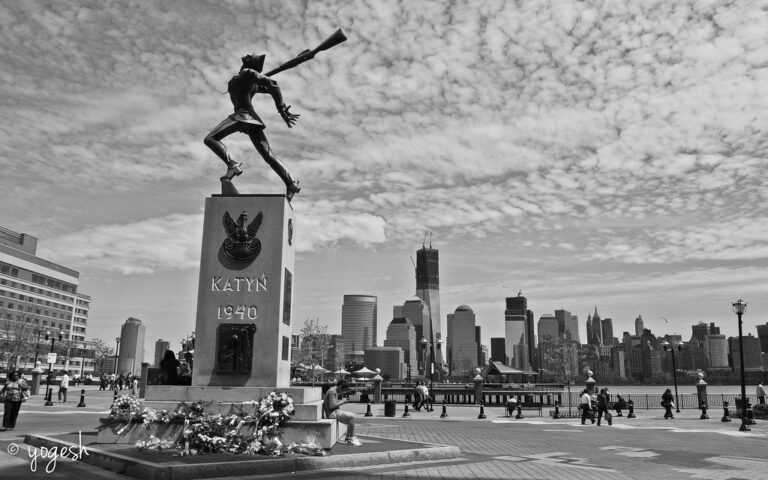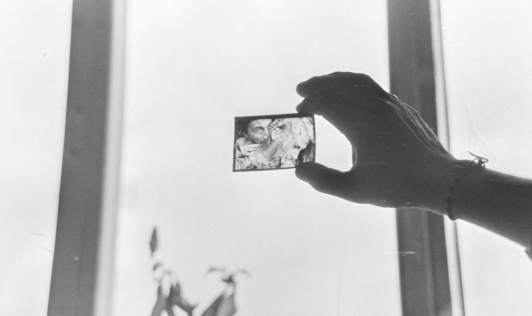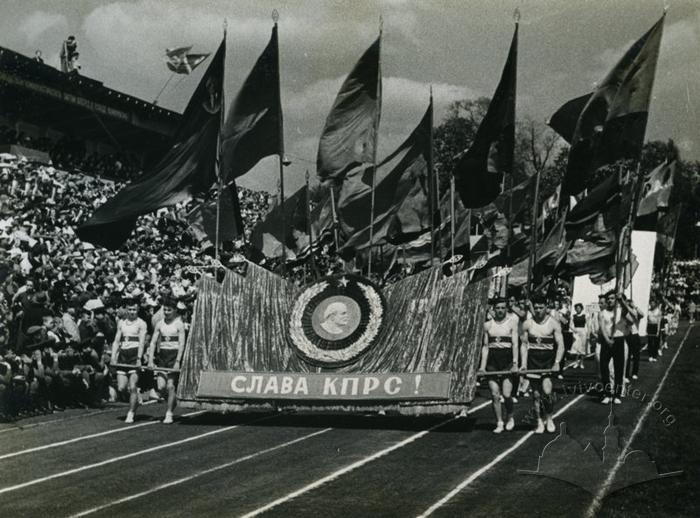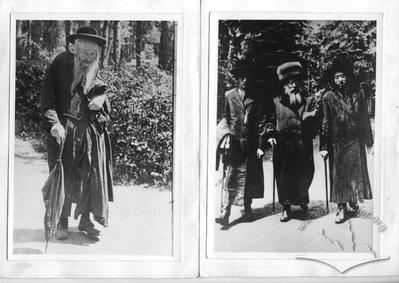Syllabi
Filter by themes:
The course aims to engage students in a dialogue with different disciplinary frameworks that explore the concepts of sexuality and decoloniality, and their intersection with other epistemic categories. These frameworks, which include anthropology, sociology, gender, queer, and trans* studies, are introduced with attention to and focus on the “decolonial option” as a method and source of knowledge.
The course aims to problematize politics as a practice of contestation that engages with the meanings of modern historical events. Combining approaches from political theory, intellectual history, and social theory, it introduces students to various academic and public discussions on wars, revolutions, modalities of peace, and their political interpretations. To do so, the course reconsiders uncertainty as the key quality of historical events, which manifests both in the course of their development and in later reinterpretations. The course intends to introduce students to critical work with historical sources and master the critical analysis of texts, debates, and events.
In the last decade, the Ukrainian parliament has issued two laws outlining the legal framework for dealing with the Russian imperial and Soviet past. These laws have sparked numerous scholarly debates on how to address the imperial past, Ukraine's status as part of the Romanov Empire and the Soviet Union, and what to do with the cultural products created over the centuries. This course aims to explore the Soviet legacy in present-day Ukraine and provide students with the necessary theoretical and methodological tools for studying, researching, and writing about Soviet history and culture. The implications for modern Ukrainian identity and politics, particularly in the context of the ongoing war with Russia, will be...
This Lesson/Unit plan was developed within the Curriculum Development Project: On Ukraine, organized by the Davis Center, Harvard University in partnership with Alexander Langstaff (New York University), and the Center for Urban History in 2024. The project was intended for middle, high school, or community college educators, living and working in the U.S. The author: Paul R. Huard, Ashland High School (Oregon, USA).
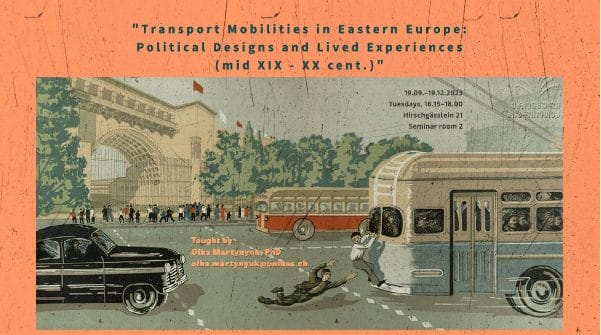 Transport Mobility in Eastern Europe: Political Designs and Lived Experiences (mid XIX – XX Century)
Transport Mobility in Eastern Europe: Political Designs and Lived Experiences (mid XIX – XX Century)
The course invites to explore East-European History of mid XIX - late XX cent. through the concept of mobility, which encompasses movement of people, goods and ideas. Students will deal with a corpus of texts on social history of transportation, as well as with a rich array of visual materials. Of special interest will be cases, specific to the region, for example cultures of Christian and Muslim pilgrimage, Socialist rallies, trolleybus infrastructures or “destalinization” of metro stations. Cases of imported western technologies will provide ground for interregional comparisons, not only in aspects of introduction of transport system, but also in aspects of their exploitation and disintegration. The course is built on a premise...
The course invites to look at the history of Soviet Ukraine from the perspective of its everyday practices. Using many visual sources from 1922 to 1991, students will explore daily routines, housing, clothing, transportation, leisure, and music consumption in urban and rural settings. Periods of peace, war, and crisis will receive equal attention so that one can see how global developments were experienced on a microlevel. Students will explore how maintaining everyday objects and personal habits was essential for building personal safety in different historical contexts. The everyday histories of Soviet Ukraine will also provide a deeper insight into the standard historical narratives about East-European societies, particularly their dialogue with the global society...
East-Central Europe played a vital role in the global history of mass migration and experienced an enormous variety of mobility processes in the long 19th and short 20th centuries. For instance, mass emigration from the Russian and Austro-Hungarian Empires and the Soviet Union, human trafficking, labor migration, forced migration during WWI and WWII, refugee crises and asylum, travel, and professional mobility. The voluminous scholarship on this chapter of migration history has lots of gaps and, notably, is almost absent from history curricula. This introductory course broadens our lens to examine the role of migration and mobility for the places where it occurred as well as the experiences of migrants, displaced persons, refugees, and...
This course, created by Prof. Sonya Bilocerkowycz, will examine how Ukrainian writers, filmmakers, and artists depict experiences of war, displacement, ecocide, colonial resistance, and other urgent concerns. Not only that, but we’ll consider how thinking alongside the work of Ukrainian creators can help us strategize ways to address global challenges as well as issues in our local communities. In signing up for this course, students agree to read and write frequently, to share their thoughtful impressions with others, and to help foster an environment of respectful dialogue and collective curiosity.
The course aims at a critical, in-depth exploration of how sexuality is intertwined with other epistemic categories and social differentials from a decolonial perspective and how the project of decolonization might look in the context of Ukraine. The course was created for Invisible University for Ukraine certificate program of the Central European University.
Russia’s war of aggression against Ukraine has prompted many to reconsider Ukraine’s relationship to the question of what it means to “decolonize.” This present-day revaluation of Ukraine’s complex imperial inheritances has centered primarily on Ukraine’s historical relationship to the Russian Empire (and the Russocentric Soviet Union), often to the exclusion of Ukraine’s Ottoman, Austro-Hungarian, and other imperial inheritances. This tragic moment of reflection raises a number of bedeviling questions. How do we narrate a decolonial history of Ukraine? Is it possible, or desirable, to disentangle Ukrainian culture from empires of the past and present? Can we imagine a future political and economic order for Ukraine that is not wholly dependent upon more powerful...
This lecture course comparatively and transnationally investigates twentieth-century communism as a modern civilization with a global outreach. It looks at the global spread of communism as an ideology, an everyday experience, and a form of statehood in the Soviet Union, Europe, Asia (i.e.Mao’s China), and post-colonial Africa. With the exception of North America and Australia, communist regimes were established on all continents of the world. The course will examine this historical process from the October Revolution (1917) to the Chernobyl nuclear disaster (1986), which marked the demise of the communist state. The emphasis is not just on state-building processes or Cold War politics but primarily on the social, gender, cultural and economic policies that...
The course explores the history of Russia as an empire from Peter I up to now in the methodological perspective of the new imperial history. What are the historical preconditions and sources of Russian imperialism and militarism? How did the small principality of North-Eastern Europe manage to create the largest empire in the world? To what extent the Russian Empire of the 18th and 19th centuries differed from European colonial empires as well as eastern imperial polities such as Ottoman Empire and China? How did the imperial nationalities policies emerge and evolve? What role did the competition between "great powers" play in turning Russia into an empire? The course attempts to answer these...
The field of social history has achieved the edge of its popularity in 1950-1980s. It was strongly connected with other disciplines, such as economics, demography, sociology, and allowed historians to reach a much wider range of research themes. Since the 1960s, the social history of the Jewish people became important and influential part of the studies. Historians were exploring the possibilities to study Jewish community with new tools and integrating different representatives of Jewish community – workers, women, immigrants, criminals - in a research. Since 1990s historians of Jewish past shifted their interest to cultural studies. However, in the last years, we can see an economic turn, which signifies the search for a...
The aim of the course is to get to know how to analyze examples of visual culture, including: fiction films and documentaries, video, photography. Both contemporary and historical materials will be studied, together with theoretical texts and publications (from the area of film and media studies, anthropology, cultural studies and history. Although images are mostly seen, if you want to really know them and understand them really well, you must not only "see" them but also "read" them, that means to analyze them as a complex message/ text. That is why at our course we will firstly discuss some terms and categories, that would help us to read images such as: composition, convention,...
This course forms a part of Jewish History and Culture of East Central Europe in the 19th-20th Centuries summer school. The syllabus is availible only in Polish.
This course was a part of Jewish History and Culture of East Central Europe in the 19th-20th Centuries summer school. The syllabus is written in Polish.
The course aims to discuss the major military conflicts of the twentieth century from a gender perspective. In doing so, the course covers the history of global and local wars in a wide variety of regions, including Europe, Africa, and Asia. However, rather than surveying a vast number of military conflicts, we will use a case study approach to conduct in-depth analyses of external and internal dynamics of military encounters and the role of gendered violence during them.
In our mini-course we will explore cultural interaction between Jews and non-Jews (Ukrainians, Poles, Russians) in the borderlands of the Habsburg and Romanov empires. This is interaction that may have been conscious or unconscious, and may have involved encounter, appropriation, negotiation, exchange and destruction.
The course intends to show the possibilities afforded by applying the gender (cultural sex) perspective in the study of Jewish culture. Proceeding from the analysis of the role of the woman and man in traditional Jewish society, we will present gender difference in the process of modernization among Jewish women and men. In looking at autobiographical materials, we will trace characteristic stages and stories, as well as life’s choices of Jewish maskilim (advocates of Haskalah, the Jewish Enlightenment). We will use the examples of the life and work of Pua Rakowska (known as "the Grandmother of Zionism") and Sara Szenirer (reformer of the traditional education system of Jewish girls) to analyze the problem...
When the well-known German author Alfred Döblin visited Lviv in 1924 he wrote: “Lviv is a lively, medium-sized, western, modern town; its streets are peaceful and bustling with life. But suddenly something strange confronts me. This city lies in the arms of two enemies, each of whom wants to dominate it. Subterranean enmity and violence are fermenting in the background”. Döblin, the son of assimilated German Jews from Stettin, also commented on the undercurrent of antiSemitism and voiced his fears, especially for the many poor Jews living in the city. (Alfred Döblin, ReisenachPolen).
This seminar explores ideas and practices of heritage in Eastern and Central Europe between 1945 and now. The course is designed as a set of five meetings, which will include short lecture introductions, seminar discussions, and at the end – practical workshop. Our meetings will be about discussing the texts, addressing cases you will read about or already know. Thіs the seminar will be our common effort in reading, asking questions and searching for answers. Therefore it is crucial that you will read assigned parts of selected texts and also consult texts from the recommended reading list. While reading assigned texts, please keep a short track of your ideas and formulate several questions...
This short course looks at Jewish history in the context of two multinational empires: the Russian and the Habsburg. Both of these states must be understood as fundamentally pre-modern, non-national (even anti-national) political structures, a fact that is crucial for understanding Jewish history here. In the mid-19th century, the great majority of world Jewry made its home in this region and even at the end of the First World War, after the great wave of emigration to the Americas, western Europe, Erets Israel / Palestine, and South Africa, the Jewish presence here was considerable. In 1918 even antisemites could hardly imagine a Warsaw, Wilno, Lwów, Odesa (etc.) without Jews.
The course consisting of five lectures focuses around interaction of text and image in modernist culture in CCE with a focus on Poland and its multicultural milieu. Two lectures break away from this framework, providing on the one hand a historical, longer perspective – and on the other locate the formal achievements of the avant-garde in today’s sociopolitical context.
Our main focus in this class will consist in Jewish experiences with cities in the twentieth century. Geographically, our center of attention will be Central and Eastern Europe (with our main – but not exclusive – emphasis on territories that, at one point or the other, came under Soviet rule); chronologically, we will concentrate (unevenly) on the period between the end of the First World War and the end of the Soviet Union. In particular, the Holocaust and the Second World War were events of central and terrible importance for this period and area. Accordingly, we will pay special attention to them.
From Lviv to New York City, walking tours are a unique form of teaching and public history, transcending the everyday interactions of the classroom. On an urban walking tour, students go to the city but the city also comes to them, often in unexpected ways. This course will provide students with a focused analysis of the walking tour as a tool for higher education and for public history.
Historians constitute a rather conservative breed, and of course some historians are more conservative than others. The comfort zone of a conservative historian is a document, that is a preserved text, especially one that has some kind of official provenance. Memoirs, testimonies, oral history — the conservative historian considers them at best to be second-rank sources, too subjective and uncertain. This kind of historian does not even recognize visual materials as sources and makes no use of them. But this is unfortunate, because we live at a time in which all sorts of information is presented ever more frequently by visual means. Our students have become accustomed to acquire information in a form...
This course covers the period from the partitions of Poland through the Russian and Habsburg Empires, the Soviet Union and interwar Poland. Students will familiarize with the geopolitical results of Russia’s westward and Austria’s eastward expansions and will focus among other overarching themes on the shtetl, the unique East European Jewish habitat; on Hasidism, a Ukraine-born popular movement of religious enthusiasm; on the interaction between Zionists and Ukrainian nationalists in Galicia; on the development of Ukrainization and Yiddishization (or Ukrainian and Jewish korenizatsiia) in the 1920s and the situation of Jews in Poland in the 1920s; on the Holocaust and its aftermath; on Ukrainians and Jews in the dissident movement; and on Jewish-Ukrainian...
Ukraine’s twentieth century was tragically marked by much politically motivated violence and authoritarian regimes as well as movements, from the radical left and the radical right. These forces and events did not only do great harm in the past but left memories and legacies that are still challenging to contemporary Ukraine. In this class, we will focus on several key issues of history, memory, and politics. The readings cannot be exhaustive. Instead, our aim is to read and discuss a sample of important short texts that allow us to reflect more broadly on the underlying questions.
This course was a part of Jewish History, Multiethnic Past, and Common Heritage: Urban Experience in Eastern Europe summer school (July 13 – August 7, 2015. Center for Urban History. Lviv, Ukraine).
This course is devoted to the analysis of representations of Ukrainian territory as a multicultural space during the "long" revolutionary period of 1917-30. We will examine different types of representations (scholarly papers, memoirs, plays, films, stories) and the features of the coexistence of ethnic communities in different parts of Ukraine and at different stages of the revolutionary period. Our overall aim will be to try to forget the familiar narrative of the "Ukrainian Revolution" and "national liberation struggle" and explore the diversity of historical materials and representations, which are not included in the narrative. By studying the events from nearly a century ago, we can better understand the events of 2014.
This course was a part of Jewish History, Multiethnic Past, and Common Heritage: Urban Experience in Eastern Europe summer school.
This course forms a part of Jewish History, Multiethnic Past, and Common Heritage: Urban Experience in Eastern Europe summer school. The syllabus is available only in Polish.
This course forms a part of Jewish History, Multiethnic Past, and Common Heritage: Urban Experience in Eastern Europe summer school.
This intensive 5-lecture mini-course (12 academic hours) takes a close look at various urban centers (sometimes the shtetl-like and sometimes the city-like) that shaped Jewish-Polish-Ukrainian cultural encounters that inspired the rising literary figures to explore East European multi-cultural urban legacy and make this legacy central in their creative writing. Students will explore various forms of East European urban culture—a shtetl (Chortkiv and Berdychiv), a provincial center (Chernivtsi and Ternopil), a city (Kyiv), a metropolis with a strong East European diaspora presence (Montreal and New York). This course will provide students with methodological tools at the intersection of the literary and cultural studies, urban studies, and social history.
At the end of the eighteenth century the Russian Empire acquired the largest Jewish population in the world. Although Jews and Christians had lived side by side with one another for over three hundred years in the Polish-Lithuanian Commonwealth, their life-worlds were distinct. The Great War, the Russian Revolution, and the Holocaust radically transformed the Jews of Russia, however, and the distinct culture of Russian-Jewry remains a crucial part of Jewish heritage today.
The course will cover the major development of the East European Jewry from the mid-eighteenth century till the present. More specifically, it will focus on the apparently largest category of modern Jewish history, i.e. modernity itself. The course will start with the discussion of what modernity means in contemporary scholarly discourse, and—more specifically—how it is applied today in historiography of East European Jewry. This introduction will provide a frame for the focus of the course: the analysis of the changing life patters and differing strategies of adopting, rejecting, or negotiating modernity in every-day lives of East European Jews.
This intensive 5-lecture mini-course (12 academic hours) introduces key broad themes that explore modernization and anti-modernization, urbanization and migration, secularization and acculturation and a new stratification of the Jewish society in East Europe. While it looks at the Russian empire and its western borderlands and Austrian Empire and its eastern borderlands, it focuses on Ukraine in its to-date geographical boundaries that include Galicia and Bukovina. The course does not have any prerequisites and provides broad contextualization of the selfimposed and empire-orchestrated reforms within the Jewish society against the backdrop of the Late Imperial Russia and the "long nineteenth century."
This mini-course introduces you to a field: cultural history. Cultural historians question how to analyze, articulate, and define how people ascribe meaning to various ideas, objects, and practices. You’ll acquire a “toolbox” of analytic frames useful for research in any field of study or cultural practice. For our “case study” of cultural history, we will delve into the history of the arts in the Russian Empire and Soviet Union from the late Imperial to the Stalinist period. This is not a comprehensive course on the arts in Russia or the Soviet Union, by any means. Rather, we will focus on the world of the arts by examining social, political and economic structures as...
The course offers a short introduction to some of the key concepts and literary and cultural practices that shaped the represenations of modern Jewish spaces in Eastern Europe as well as their contemporary reconstructions and exhibitions. While focusing on (Jewish) Poland and Yiddish culture, this course introduces critical tools for understanding and interpreting modern (Jewish) contructions and experiences of space and place.
In 1939, on the eve of the Holocaust, east European Jewry constituted the most important and culturally influential Jewish community in the world. As a result of half a century of mass migration, up to 90% of world Jewry either lived in Eastern Europe or were children of immigrants from there. Jews were particularly prominent in East European cities. In Galicia, for example, Jews constituted a plurality or majority of nearly every major city. (L’viv was an exception, where they made up “only” a quarter of the population.) This course will survey the modern history of this once vital community – social, economic, political, religious and cultural – from the Polish partitions until...
The field of social history has achieved the edge of its popularity in 1950-1980s. It was strongly connected with other disciplines, such as economics, demography, sociology, and allowed historians to reach a much wider range of research themes. Since the 1960s, the social history of the Jewish people became important and influential part of the studies. Historians were exploring the possibilities to study Jewish community with new tools and integrating different representatives of Jewish community – workers, women, immigrants, criminals - in a research. Since 1990s historians of Jewish past shifted their interest to cultural studies. However, in the last years, we can see an economic turn, which signifies the search for a...
The course explores the ways in which Jewish history and culture are narrated and visualized in the new museum and exhibitions projects in post-communist East Central Europe, and how those museums as public institutions, and curatorial interventions contribute to establishing, (re)shaping, countering or petrifying respective national narratives, the understanding of cultural difference and prejudice.


